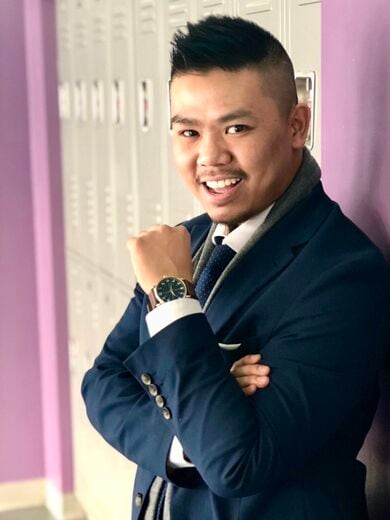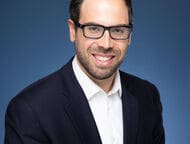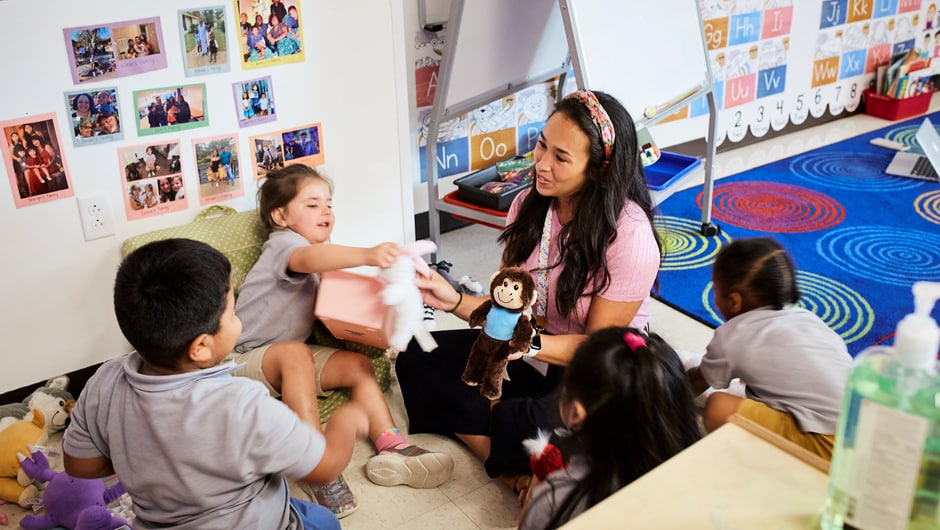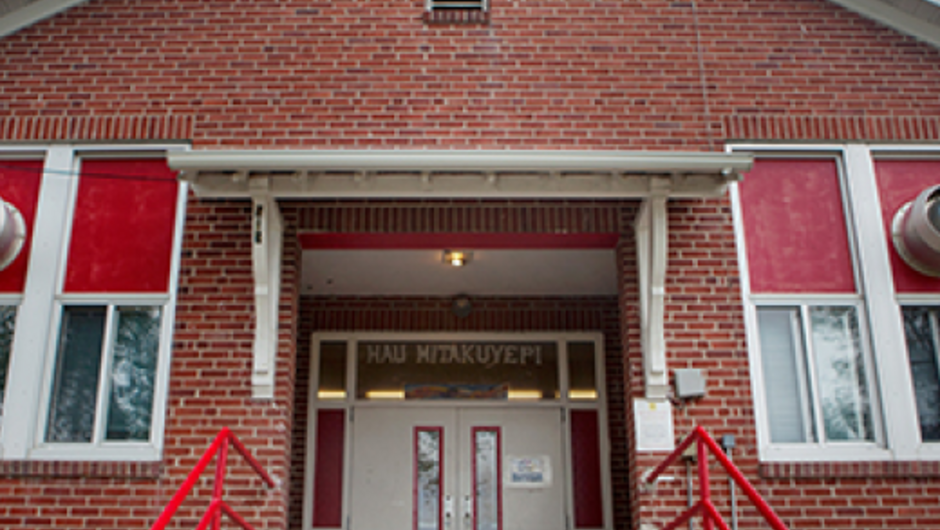
‘Resilient and Thriving’: What Immigrants Bring to Education
This Immigrant Heritage Month, we’re highlighting the vital role immigrants play in creating an educational system that is excellent and equitable for all students.
The immigrant community is not a monolith. It spans every color, religion, language, identity, and immigration status, over 50 million strong and growing. But at the start of every immigrant’s journey was bravery and great hope for a better future for themselves and for their children.
That same hope and bravery of the generations before them is what fuels the immigrant movement for justice. The progress we have seen over time is the direct result of generations of activists in the immigrant community who continue to demand that all people in this country have the right to thrive and lead lives of dignity.
On June 18th, the U.S. Supreme Court ruled that the proper administrative procedures were not followed in rescinding DACA in 2017, allowing the program and the protections that DACA recipients receive under the program to continue. Though the fight for justice and equity for all members of the immigrant community is far from over, it is a moment of great victory and one that perfectly coincides with everything that we celebrate in June.
This Immigrant Heritage Month, we honor the diversity and unyielding resilience of our immigrant communities, spotlighting their invaluable contributions to our nation and to the work of ending educational inequity.
Today, we’re sharing the stories of three alumni in the immigrant community who leverage their identities in their careers of impact—as educators, leaders, and advocates—to demand better for all students.
'Being the Teacher I Needed When I Was a Young Person'
Astou Thiane (New York ‘15): ELA teacher at KIPP Academy Middle School
When Astou Thiane and her family immigrated to the United States from Senegal in West Africa, Astou was seven-years-old and had to acclimate to an entirely new country, new language, and a new school system.
“Very early on, I knew I had to do well in school so that I could have a different life for myself,” Astou says. “A life with more agency than what was carved out or what was expected for me.”
But despite Astou’s commitment to her education, she didn’t always feel seen and supported in the classroom as a Black immigrant and as an undocumented child. “Oftentimes, because we're Black immigrants, the assumption is that we grew up here,” she explains. “We are made invisible by a narrative that all immigrants are Latinx, a narrative that you can't be Black and an immigrant or Afro-Latinx. It's a double whammy of not having any legal status in this country and dealing with anti-blackness and white supremacy in our country.”
Because of this dual identity, some educators assume that Black immigrants don’t need the same resources offered to Latinx immigrants, according to Astou. This includes resources around the difficult process of applying to college as an aspiring first-generation college student.
The college application process was an especially difficult and painful process for Astou as an undocumented student. “It was when I was trying to navigate the college process on my own that I had the first teacher who I came out to in high school tell me, ‘You can't go to college,’” Astou says. “I just didn't want that for kids like me.”

Today, Astou is a proud graduate of Hunter College, a founding board member of Teach For America’s National DACA Advisory Board, and an ELA teacher at KIPP Academy Middle School in the South Bronx, located in the same city where she grew up and went to school. She joined Teach For America to be the teacher she herself needed as a young person and to serve the children in her community, especially Black immigrant students whose identities go overlooked.
“There are African immigrants, Caribbean immigrants, and they're in our classrooms,” Astou says. “Oftentimes teachers are almost completely unaware of what the implications of that might mean, whether that's the actual student being undocumented themselves, or maybe they have an undocumented parent. Those are huge obstacles that are faced by Black immigrants today.”
Astou wants to raise awareness and bring visibility to these obstacles. To her, Immigrant Heritage Month is all about visibility. It’s a time when immigrants, including Black immigrants, are seen and valued for their resilience and for everything they contribute to this nation.
But more important than the month itself are the ways people step up all year around to ensure all members of the immigrant community are visible and heard, including Black immigrants. Especially in the midst of the protests and calls for justice on behalf of Black lives.
“Direct action on behalf of immigrants and Black immigrants is necessary to advocate for Black lives, to fully advocate for Black lives,” Astou says. “Being an ally and a co-conspirator means putting your body on the line to protest, making sure that you are donating for causes, making sure you're signing petitions, calling elected officials, and holding them accountable for passing comprehensive immigration reforms.”
'I Want to Make Sure That Everything I Do Is Paving Pathways for Future Leaders of Color'
Phillip Nguyen (Oklahoma ‘13): Founder & Managing Partner at EdChiefs
In Phillip Nguyen’s family, the expectation for all of his nieces and nephews is to attend and graduate from college. But it wasn’t always this way. This path was treacherous, as he puts it, and slowly built upon the hardwork and sacrifice of many generations.
“My family came to the United States in 1979 as war refugees from Vietnam. My grandfather fought in the war and he actually built a boat to save 114 of our family and friends,” Phil says. “We began in the berry fields, then we worked in janitorial service industries, then cosmetology, and now the family is full of serial entrepreneurs and everyone is thriving.”
While in high school, Phil and his family lacked access to crucial resources like financial aid and information about different college pathways. Phil credits one high school assignment—to write and submit a college admissions essay and application—for putting him on the path to attend college and eventually earn his master’s degree through Johns Hopkins University.
But for too many Asian immigrant students, the harmful stereotype of the “model minority myth” often means they’re not provided the academic resources they need to thrive academically. They are left out of the discourse around educational equity, despite these barriers.

“The experiences of Asian immigrants are minimized and they're stereotyped under the model minority myth. Our stories are not at the forefront,” Phil explains. “In regards to my own personal experience, the barriers I faced were financial, the level of support I received in education, and parental information. It shouldn’t come as a barrier to providing equal education to our community.”
This desire to support his community and other underserved communities of color motivated Phil to join Teach For America in 2013, where he taught third and fourth grade in Oklahoma.
“That year, I taught almost 40 third-grade scholars, many with a kinder- or first-grade reading level,” Phil says. “Our students that year were faced with a reading proficiency test where they were required to pass in order to be promoted.”
“By the end of my first year, I was able to get 80 percent of those 40 students to reach the next grade level, which was huge,” he continues. “I knew this was what I wanted to do for the rest of my life, essentially.”
Today, Phil wears a number of hats in the education space as a proud first-generation college student and gay leader of color: He is the founding president of the National Association of Asian American Professionals New Jersey chapter, the founding co-chair for TFA New Jersey's alumni board, the national partnerships manager for K12 Learning Solutions, and the founder and chief program officer at the New Jersey Charter School Launch Program.
On top of all of that, Phil is also the founder and managing partner at EdChiefs, which provides education and social impact organizations with remote chief level support. The organization aims to diversify the education space with chiefs of color.
“I want to ensure that everything that I'm doing is paving pathways for our future leaders or current leaders of color,” Phil says. “I want to ensure that even within the education space, if it's in a different sector within the nonprofit space, EdTech, or in managed public schools, that we are building other opportunities for our community to thrive.”
By focusing on developing leaders in education, Phil hopes to pave the pathway for current and future leaders of color who can advocate for students from vulnerable communities, including students like himself from the Asian immigrant community.
“The Asian immigrant narrative is not a standalone story, but one that fuels the change that is necessary to support and uplift and strengthen our fight for equity amongst our immigrant population,” Phil says. “Our stories matter.”
'Teachers Have the Power to Create Affirming Spaces for Students'
Gilberto Garza Reyes (Rio Grande Valley ‘16): Manager of Program Operations at Teach For America Rio Grande Valley
Gilberto Garza Reyes’s mother grew up in a small ranch outside of Monterey, Mexico, where she never had the access or opportunity to go to school beyond the third grade. When she came to the United States, she brought with her a relentless drive and motivation for her children to attain the education she never had.
It is this passion for education, and for ensuring all students feel affirmed and safe in seeking education, that guides everything that Gil does today. But it wasn’t always easy to model vulnerability.
Growing up in Arkansas, Gil never felt comfortable sharing his full self with others, as a Latinx immigrant, queer, and formerly undocumented youth. “I was fearful of disclosing my status, fearful of also disclosing my queer identity.” Gil says. “It wasn't until college that I was able to find these affirming spaces for myself.”
After college, Gil joined Teach For America in 2016 and taught STEM in the Rio Grande Valley. At first, he felt a familiar fear of disclosing his full identity to his students. But recalling his own childhood experiences gave him the bravery to be his authentic self, so his students could be their authentic selves as well.
“I was very nervous before I started with the classroom about sharing both my DACAmented status and my LGBTQ+ identity,” Gil says. “For me, thinking about that and reflecting on that just made me realize that my students were feeling the same way.”
And he was right. As a teacher, he met students from all walks of life who viewed his classroom as a safe space.
“I think of my student who halfway through the year her mom was detained and she had nobody else to go to when she was going through that situation,” Gil says. “I also think of another student who exceptionally bright, a valedictorian of his class, but only in my classroom could he be his authentic queer self.”
“For me, that just cemented the need for me to be that representation that they needed,” he adds. “Every teacher has the power to build affirming spaces in their classroom.”
Today, Gil continues that essential work of building positive representation as a manager of program operations for Teach For America Rio Grande Valley and as a member of both Teach For America’s Prism and National DACA Advisory boards. Having a seat at the table when decisions are being made that impact students who share his identities is a great privilege and responsibility for Gil.
“I know that we bring a lot of resilience, a lot of dedication to this fight to end educational inequity. In our community, we know what it's like to not have access to many resources,” Gil says. “We bring those same emotions and feelings that we felt going through our own educational process to ensure that others who were facing these inequities within our communities feel seen and feel valued."
Resources for Immigrant Students and Communities
We have collected a number of resources for immigrant students and their families from our national partners and collaborators. Explore and share these resources to learn how you can support immigrant students in your classroom, this month and always.
Sign up to receive articles like this in your inbox!
Thanks for signing up!
Content is loading...







